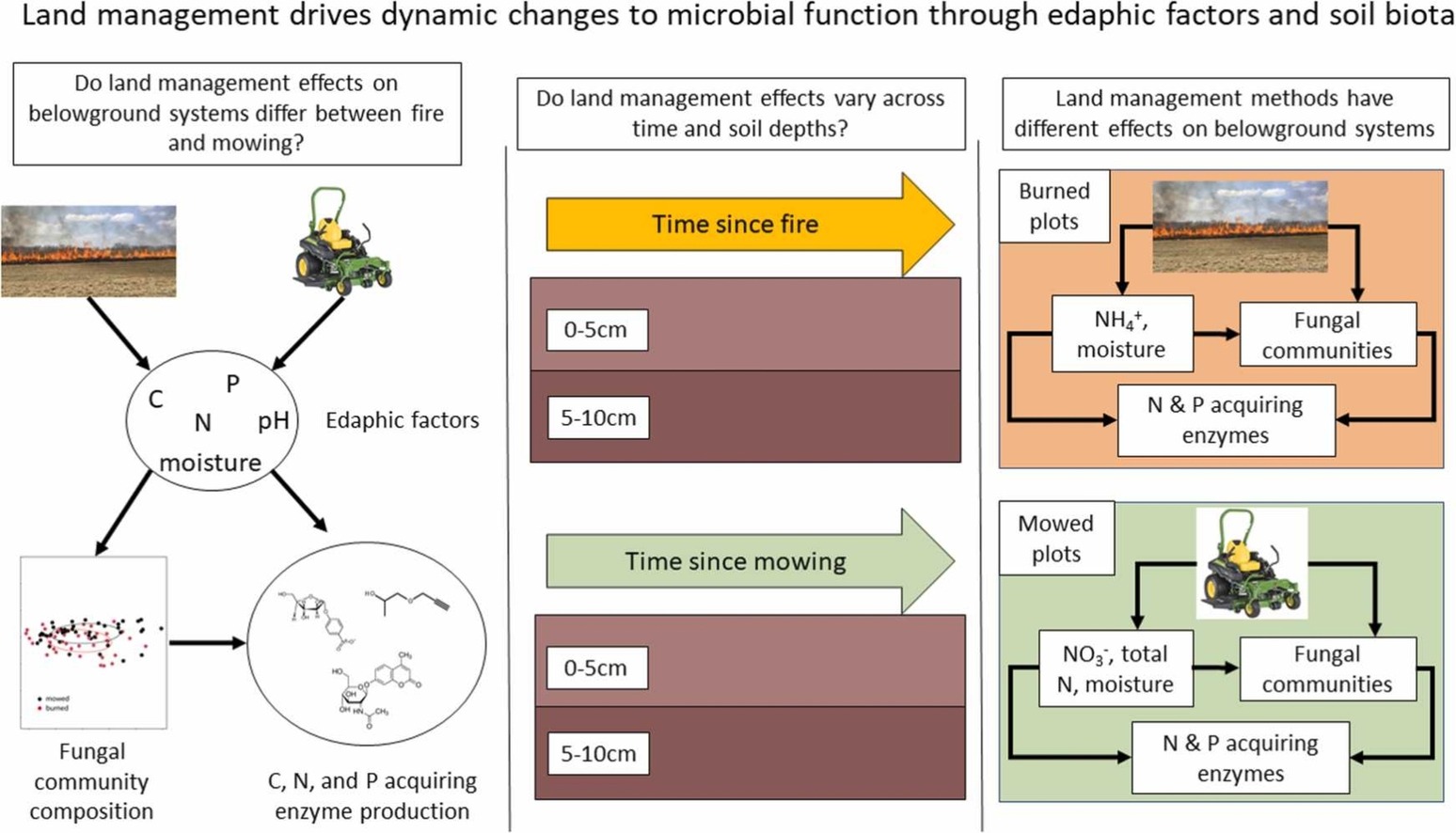“Land management drives dynamic changes to microbial function through edaphic factors and soil biota” #rxfire @MicroSikes @JacobHopkinsOSU
 Tuesday, January 17, 2023 at 10:00AM
Tuesday, January 17, 2023 at 10:00AM Land management drives dynamic changes to microbial function through edaphic factors and soil biota
This article was published online Dec. 12, 2022, in Pedobiologia. Access the article through the permanent web address (DOI). (https://doi.org/10.1016/j.pedobi.2022.150859)
Abstract
Land management for conservation alters the abiotic and biotic components that underly belowground ecosystem health and function. We know that prescribed burning and grazing influence soil characteristics, nutrients, and biota individually, but rarely have these management effects been explored holistically, affecting an interacting belowground system. Since most belowground functions (e.g., nutrient cycling) arise from feedbacks among many soil factors, a better understanding of system-level responses to distinct management practices, rather than individual component responses, can help us better predict these ecosystem functions.
In a late successional tallgrass prairie ecosystem, we contrasted how prescribed fire and mowing altered nutrient cycles through changes to the abiotic soil environment, microbial community structure, and microbial enzyme functions.
Individual soil factors responded rapidly to both fire and mowing, and remained different from pre-treatment values. However, as a system, many relationships among soil factors that were present before management and lost directly after management, returned 1 month after management.
This shows the system-level resilience to management supported by the long evolutionary history between grasslands, fire, and grazing, and illustrates the importance of understanding management effects from a holistic perspective. Since global disturbance regimes and anthropological influence are predicted to change in the future, understanding how belowground components respond to change as a system can help land managers and ecologists alike conserve endangered ecosystems.
Keywords: Land management; Microbe; EnzymeSEM; Fire; Grazing; Belowground; System
Citation
Hopkins, Jacob R., Tatiana A. Semenova-Nelsen, and Benjamin A. Sikes. "Land management drives dynamic changes to microbial function through edaphic factors and soil biota." Pedobiologia 96 (2023): 150859.
Graphical Abstract
